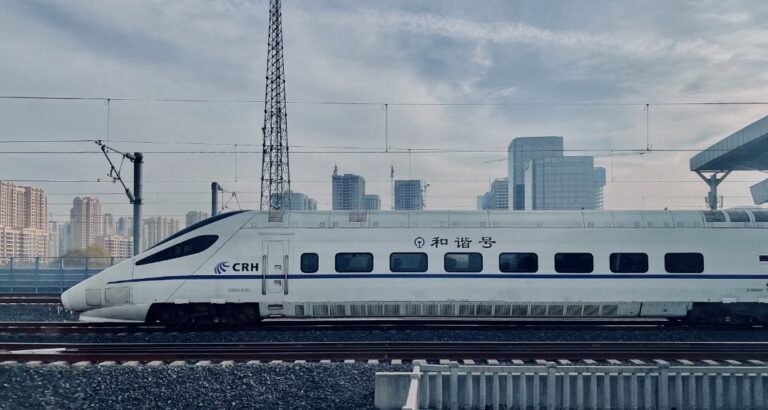Shinkansen, from the Japanese (新幹線) meaning “new railway line”, is the high-speed train line that connects the main cities of Japan, from Hokkaidō to Kyūshū. The first historic route was the Tōkaidō Shinkansen, inaugurated on 1 October 1964, which connected the most important cities of the Japanese economy, Tokyo, Nagoya and Osaka.
Since then, approximately 6.6 billion people have traveled on this route, which is just one of the current Shinkansen lines, currently the most used high-speed route in the world, with its 378 trains and 458 thousand passengers per day.
But how does a “bullet” train work, at what speed does it travel and why is it called that?
Table of Contents
The Shinkansen line project
The first fundamental difference already concerns the design of this line. We are in the years immediately following the Second World War which left Japan literally on its knees. To restart, not only from an economic point of view, but also from the point of view of pride, the country clung to the project of a new and innovative railway line.
Thus, while the rest of the world invested in air transport, considered more advantageous, Japan concentrated its resources to develop land transport even further, designing a line, the Shinkansen, which would have united the main cities of the country in less time.
To do this they built a line entirely dedicated to the purpose, characterized by a wider track than the local lines, and by few and very wide curves. In fact, the Shinkansen do not go around the obstacles they encounter along the route, but go straight ahead.
There are a lot of tunnels, bridges and underpasses where it is always and only the other means of travel that is sacrificed. In doing so, the trains on this line are able to maintain a constant cruising speed, and are not affected by the problems or delays of the other lines since they have one all to themselves.
Read also: These are the world’s fastest trains, examples of cutting-edge technology and engineering
Why is it called a “bullet train”?
Let’s dispel a myth right away: the speed is not as dizzying as you think. Although they are capable of reaching and even exceeding 400 km per hour, their cruising speed is usually between 240 and 320 km per hour, for safety reasons, and can vary depending on the type of train and the route.
The trains of the Tōkaidō Shinkansen line are divided into three categories, Kodama, Hikari and Nozomi, depending on the number of stops they make during their journey. The fastest are the Nozomi class trains, which stop only at the largest stations, capable of covering the distance between Tokyo and Osaka, of 550 km, in just 2 hours and 20 minutes.
The name “bullet train” entered the popular imagination due to the Shinkansen Series 0, the first historic train to operate between Tokyo and Osaka. Thus characterized by a pointed shape that resembled that of a bullet. A special yellow convoy, therefore renamed “Doctor Yellow”, travels along the line during the night, checking the safety status of the tracks.
Thanks to this system, in over 50 years of history, the count of fatal Shinkansen accidents is still at zero, as is that of injuries. The average annual delay on routes is not calculated in the order of minutes but of seconds, in a calculation that also takes into account natural disasters that can interrupt the service.
The punctuality of Japanese trains
Approximately 378 trains travel on the Tōkaidō Shinkansen line every day. There are a majority of Nozomi departing from Tokyo Station every 8-12 minutes.
It is absolutely true that trains split second. Think that in 2019, on an annual basis, therefore out of the approximately 145 thousand trains that passed on the Tokaido Shinkansen line, the average convoy delay was approximately 24 seconds.
Read also: What are Maglev trains and how they will revolutionize the travel industry












